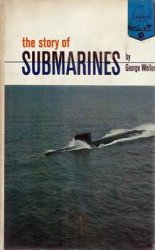Within the state, farming, or agribusiness, produced more wealth than many other sectors of the economy. This was especially the case as government-funded irrigation projects
Figure 10.1 The Central Valley Project. Based on Norris Hundley, Jr., The Great Thirst: Californians and Water: A History (Berkeley: University of California Press, c.2001), p. 256. Reproduced with permission of University of California Press.

Proliferated from the northern to the southern interior regions of the state. California’s agricultural productivity was the highest in the world during the interwar years. The state’s canning industry, a spinoff of crop-raising, flourished in these decades and, similarly, led the world. Banks in the state were instrumental in supplying capital to corporate farmers and funds for agricultural research.
This period witnessed a furthering of the ongoing shift from family farming to agribusiness or “factories in the fields.” Many corporate giants - such as Miller and Lux, Standard Oil, and the Irvine Company - owed their growth and success to their capacity to buy huge tracts of land and their use of the latest equipment, machinery, and fertilizers to maximize yields of grain, fruits, nuts, and other crops. The Irvine Company affords an example. In
1894 James Irvine II, founder of the company, inherited from his father a huge ranch in Orange County, assembled from three adjoining Mexican land grants. The holdings exceeded 100,000 acres at one point. The son incorporated his properties as the Irvine Company that year. By the 1920s and 1930s, the company had diversified its operations to include citrus and vegetable farming, ranching, real-estate development, and numerous hydrological projects, including the construction of dams and even a water pipeline to the City of Laguna Beach. Such was the scale of agribusiness in some parts of California during the interwar years.
Consolidation of land holdings fostered vertical integration in agribusiness, meaning owners purchased croplands, arranged for the cultivation of the soil often through the use of tenant farmers, processed what was harvested, and handled distribution and marketing of their products. The case of the DiGiorgio Fruit Company, founded by Sicilian immigrant Giuseppe DiGiorgio, is illustrative. Leaving the East Coast, in 1919 he bought 5,845 acres of land in the southern San Joaquin Valley near Arvin. There, the following year, he established the company bearing his name. To provide water for the apricots, grapes, and peaches he grew, DiGiorgio drilled wells and used electric pumps. Ten years later the company operated America’s (some say the world’s) largest fruit-packing plant, where grading, packaging, and shipping took place. From the plant he sent his fruit products, along with those of other nearby growers, to market on a branch railroad line constructed for their use. DiGiorgio, then, controlled each stage of the production process from beginning to end.
While citrus growing had long dominated California agriculture, by the 1920s numerous vegetables and other plants were also being farmed, resulting in crop diversification. With nearly 200 different crops being cultivated, the state led the nation in the variety of products coming from the soil.
Two such products gained particular importance in the 1930s: cotton and rice. Introduced into Alta California by Franciscan padres in the late eighteenth century, cotton cultivation spread into the San Joaquin and Imperial valleys in the next two centuries. In the early 1930s it was the second most profitable crop in the state. By then California ranked eleventh in cotton production nationwide. Three-fourths of the 1933 harvest in the San Joaquin Valley was sold to Japan. Immigrant farmers from that country brought rice cultivation to the Golden State in 1900. By the 1920s the Sacramento Valley provided large quantities of that staple, rendering California the third-ranking rice-producing state in the nation. The yield per acre was the highest in America. In 1937 the state produced 10 million bushels of the grain. By then the Rice Growers Association of California, a farmer-owned cooperative aimed at ensuring quality and increasing sales, had opened Pacific Rim export markets that would become increasingly lucrative.
Livestock and poultry raising comprised another segment of California agriculture. Dairying was sufficiently robust, due in part to cooperatives, to meet the state’s domestic needs for milk, butter, and cheese. During the 1930s only Wisconsin and its few surrounding states surpassed California as producers of these foods. In the beef and pork markets, California lagged well behind Texas and Iowa respectively. Chicken and turkey ranching spread into the semi-arid parts of the state.
The agribusiness sector of California’s economy in the interwar years grew because of bank loans. Corporate farmers relied on bank credit to cover the enormous outlays of
Cash needed for land, equipment, fertilizer, and insurance. Credit was available because banks in the state had in the early decades of the twentieth century grown their assets by building branch offices and extending large mortgage loans to land developers and other business interests. Amadeo P. Giannini founded the Bank of Italy in San Francisco in 1904 and spent the next few decades expanding his interests in New York and Italy, and developing branch banks within the state. By 1927 his bank owned one of every 11 mortgages in California’s major farming areas. In 1930 he established and endowed the Giannini Foundation of Agricultural Economics at UC Berkeley (later joined by UC Davis and UC Riverside), which promoted and supported agricultural research and rural development in California. That same year, Giannini consolidated his holdings into the newly chartered Bank of America, which by 1940 had emerged as the world’s largest private banking institution, demonstrating the growing financial clout of Greater California. A similar process of consolidation through bank mergers occurred in Los Angeles. There in 1929, entrepreneur Joseph Sartori absorbed the Farmers and Merchants Bank into his new Pacific Security Bank. Eventually, this financial institution would become the sixth largest bank in the United States and an investor in numerous non-banking ventures internationally.




 World History
World History









